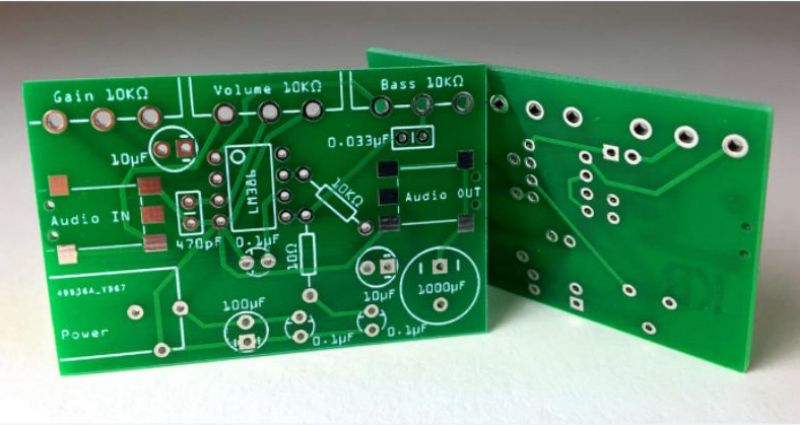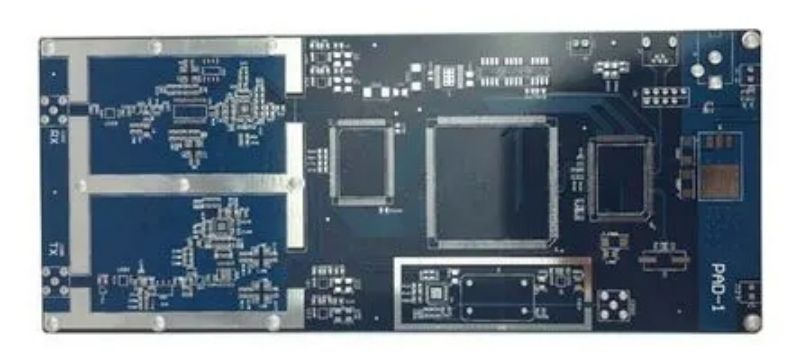How to enhance the anti-static ESD function of PCB copy board?
In the design of the PCB board, the anti-ESD design of the PCB can be achieved through layering, proper layout and wiring and installation. During the design process, the vast majority of design modifications can be limited to adding or subtracting components through prediction. By adjusting the PCB layout and wiring, ESD can be well prevented.
Static PCB electricity from the human body, the environment and even inside the electric PCB board equipment will cause various damage to the precision semiconductor chip, such as penetrating the thin insulation layer inside the component; Damage to the gate of MOSFET and CMOS components; CMOS PCB copy trigger lock; PN junction with short circuit reverse bias; Short-circuit positive PCB copy board to offset PN junction; PCB sheet melts the solder wire or aluminum wire in the PCB sheet part of the active device. In order to eliminate electrostatic discharge (ESD) interference and damage to electronic equipment, it is necessary to take a variety of technical measures to prevent.
In the design of the PCB board, the anti-ESD design of the PCB can be achieved by layering and proper layout of the PCB board wiring and installation. During the design process, the vast majority of design modifications can be limited to adding or subtracting components through prediction. By adjusting the PCB layout and routing, the PCB copying board can be well prevented from PCB copying board ESD. Here are some common precautions.
Use as many layers of PCB as possible, compared with double-sided PCB, the ground plane and power plane, as well as the closely arranged signal line-ground spacing can reduce the common mode impedance and inductive coupling, so that it can reach 1/10 to 1/100 of the double-sided PCB. Try to place each signal layer next to a power layer or ground layer. For high-density PCBS that have components on both the top and bottom surfaces, have very short connection lines and many filling places, you can consider using an inner line. For double-sided PCBS, a tightly interwoven power supply and ground grid are used. The power cable is close to the ground, between the vertical and horizontal lines or fill areas, to connect as much as possible. One side of the grid PCB sheet size is less than or equal to 60mm, if possible, the grid size should be less than 13mm
Make sure each circuit PCB sheet is as compact as possible.
Put all connectors aside as much as possible.
If possible, introduce the power PCB strip line from the center of the card and away from areas that are susceptible to direct ESD impact.
On all PCB layers below the connectors leading out of the chassis (which are prone to direct ESD damage to the PCB copy board), place wide chassis or polygon fill floors and connect them together with holes at intervals of approximately 13mm.
Place PCB sheet mounting holes on the edge of the card, and connect the top and bottom pads of PCB sheet unimpeded flux around the mounting holes to the ground of the chassis.
When assembling the PCB, do not apply any solder to the top or bottom PCB sheet pad. Use screws with built-in PCB sheet washers to achieve tight contact between the PCB sheet/shield in the metal case or the support on the ground surface.
The same “isolation area” should be set up between the chassis ground and the circuit ground of each layer; If possible, keep the spacing at 0.64mm.
At the top and bottom of the card near the PCB copying board mounting holes, connect the chassis and circuit ground together with 1.27mm wide wires along the chassis ground wire every 100mm. Adjacent to these connection points, solder pads or mounting holes for installation are placed between the chassis floor and the circuit floor PCB sheet. These ground connections can be cut open with a blade to stay open, or a jump with a magnetic bead/high frequency capacitor.
If the circuit board will not be placed in a metal case or PCB sheet shielding device, do not apply solder resistance to the top and bottom case grounding wires of the circuit board, so that they can be used as ESD arc discharge electrodes.
To set up a ring around the circuit in the following PCB row:
(1)In addition to the edge of the PCB copying device and the chassis, put a ring path around the entire outer perimeter.
(2)Make sure all layers are more than 2.5mm wide.
(3)Connect the rings with holes every 13mm.
(4)Connect the ring ground to the common ground of the multi-layer PCB copying circuit.
(5)For double-sided PCB sheets installed in metal enclosures or shielding devices, the ring ground should be connected to the circuit common ground. The unshielded double-sided circuit should be connected to the ring ground, the ring ground can not be coated with solder resistance, so that the ring can act as an ESD discharge rod, and at least a 0.5mm wide gap is placed at a certain position on the ring ground (all layers), which can avoid the PCB copy board to form a large loop. The distance between the signal wiring and the ring ground should not be less than 0.5mm.

